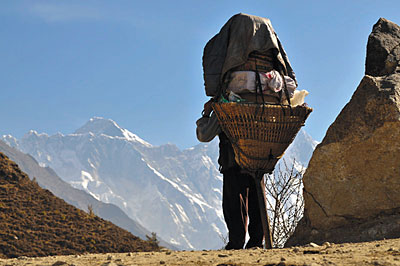 |
What does a Nepali drinking milk (and getting the usual upset stomach) have common with a Nepali running up a mountain? It's not in the stars, that's for sure. But it may be DNA based.
About 7,000 years ago Northern Europeans learnt how to digest milk, a clear human evolutionary change. But people in South Asia never made this genetic change, so many suffer from lactose intolerance (milk indigestion), which accounts for our 'pet gadyang gudung' after drinking a glass or two of milk. A new example of documented evolutionary change may well be in the field of high-altitude adaptation by Tibetans; and possibly (by extrapolation) our Sherpas, as well as other ethnic groups with Tibetan ancestry.
Recent, independent reports from the Beijing Genomics Institute, Case Western Reserve University, and the University of Utah have detected a gene that helps Tibetans adapt to high altitude. This gene is called Hypoxia Inducible Factor (HIF 2 alpha, to be precise), and seems to assist adaptation to high altitudes, just as Europeans avoid milk indigestion through a genetic switch.
There are high-altitude dwellers in South America, too, but they do not seem to adapt properly to high altitude. In fact they maladapt. The Han Chinese from the mainland who ascend to live in Tibet also don't seem to do well. They may suffer from chronic problems in the lungs (shortness of breath) and brain (lethargy), primarily because they produce too much haemoglobin in the blood. Tibetans, on the other hand, seem to hold off on overproduction of haemoglobin thanks to the HIF gene. The intriguing question then is, do the Sherpas who share Tibetan ancestry also possess this HIF gene? If they do, does this gene play a significant role in their amazing ability to climb the mountains of the Himalaya? In other words, does the HIF gene give them a performance advantage?
A team led by Dr Cynthia Beall, medical anthropologist at Case Western Reserve University in Ohio, USA and one of the lead academics investigating the HIF gene, is actively looking into some of the preliminary questions pertaining to the Sherpas. The answers could pave the way to some of the most intriguing findings in high-altitude Himalayan medicine in recent times.


